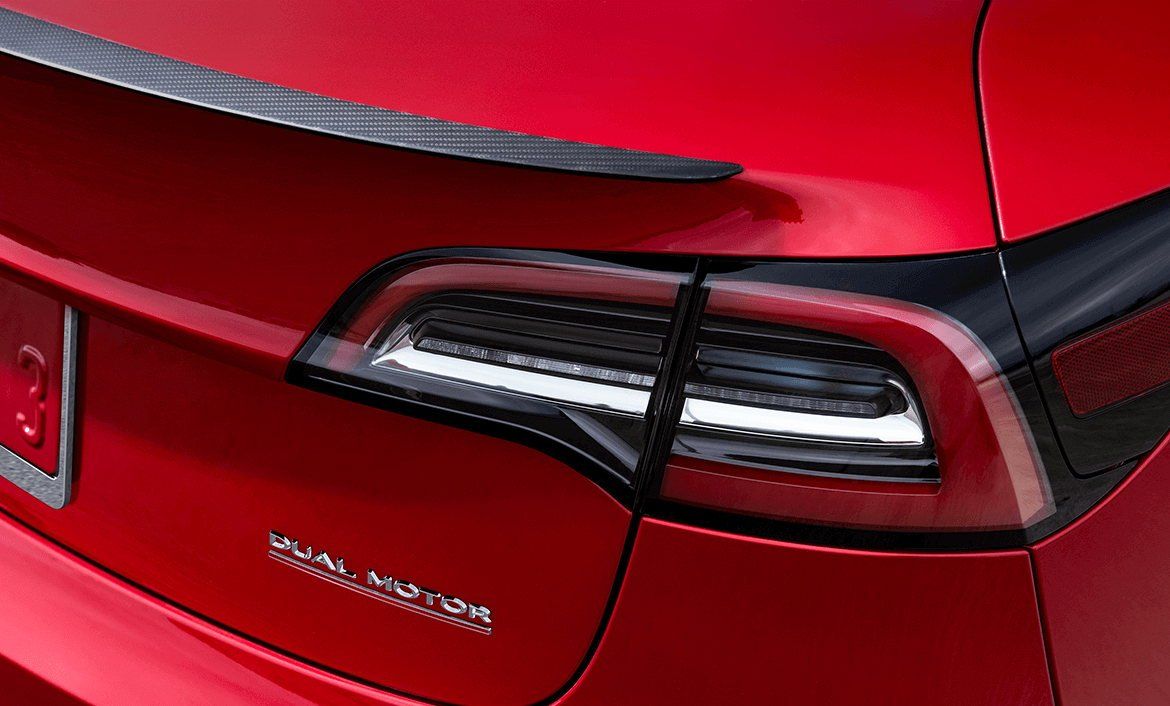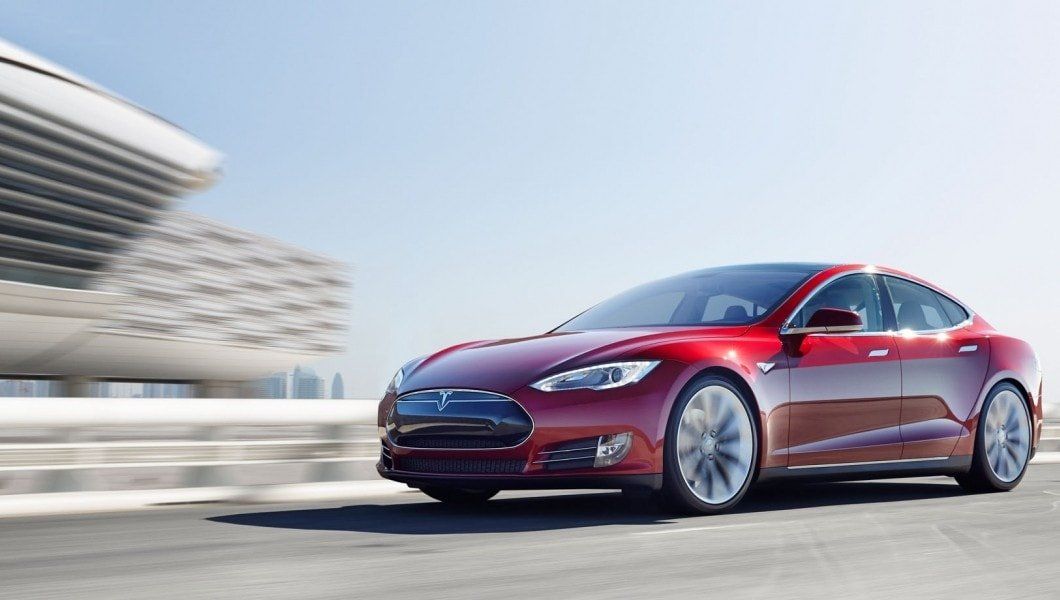What are the differences between the Tesla Model 3 Performance and the “Standard Range” or “Maximum Range” version? Here is a summary:
Tesla Model 3 Performance values
In terms of performance values, the performance model differs significantly, mainly due to its acceleration from 0 to 100 km/h in 3.4 seconds. Compared to the Model 3 “Maximum Range” with its already excellent value of 4.6 seconds, this is an additional punch. The word “catapult” is the only thing that comes to my mind. In terms of range, the 20-inch rims with their higher aerodynamic drag cost about 10% less range compared to the 18-inch aero-style rims. Of course, Tesla also tickled out a little more at the top speed for the performance model and topped the “maximum range” model 3 with a 25 km/h higher value. Traditionally, however, this should be negligible.
| Standard range plus (rear-wheel drive) | Long range (rear-wheel drive) | Long range (all-wheel drive) | Performance (all-wheel drive) | |
| Range (WLTP) | 409 Km | 600 Km | 560 Km | 530 Km |
| Acceleration (0-100 km/h) | 5,6 Sec | 5,3 Sec | 4,6 Sec | 3,4 Sec |
| Maximum speed | 225 km/h | 225 km/h | 235 km/h | 261 km/h |
| Horsepower | 258 hp | 287 hp | 460 hp | 490 hp |
Source: Wikipedia
About consumption, this table lists the differences in detail. The size of the rims, for example, has more influence than you might think (at the end of the table are values in Km).
Console tray with Armrest Hidden Cubby Drawer
Shop for more Tesla Accessories here!
Vehicle Equipment
The Model 3 Performance comes along with a certain understatement in comparison to the sport versions of other manufacturers. The body elements are identical to the other Model 3 variants. Only the additional rear spoiler made of carbon fibre marks a discreet difference:

All performance models from Tesla are identified by the additional line below the lettering. The choice of rims is manageable, as the Performance Model 3 is only available with 20-inch rims. It also has larger brakes with red calipers and a lowered chassis:

Light metal pedals made of aluminum round off the sporty appearance of the interior:

As with the “Long Range” Model 3, the interior is only available as a premium interior. Otherwise, there is no visible difference between the interior and the “Long Range” version. A functional difference, however, is the missing possibility of a trailer hitch on the Performance model.
Track Mode
With the Track Mode, Tesla has given the performance model an exclusive driving mode for the racetrack. Other vehicle manufacturers tend to deactivate the assistance systems for their “sport mode” so that the driver can take his vehicle beyond the limits of these systems designed for safety. Rather than removing features to enhance the experience of professionals, Tesla Track Mode adds features that allow any racetrack driver, amateur or professional, to enjoy an excellent driving experience. The Stability Control System can thus improve the driver’s performance on the track through special software support.
Among other things, the torque is distributed differently between the front and rear axles than in normal driving mode. Since the two electric motors can be controlled separately, the system can also shift 100 percent of the drive forces to one axle. The cooling capacity of the components is maximized to counteract the heat generated by the heavy strain on the drive system. In detail, this means that the battery is precooked. The separate cooling circuits of the powertrain and battery can be combined in track mode, so that the cooled battery can also cool other parts of the vehicle while driving, like a kind of “cool pack”. The higher performance of the regenerative braking system also allows the brakes to heat up more slowly.
It is not possible to cancel or deactivate the stability programs on the Tesla Model 3 Performance. However, selective brake intervention allows Track Mode to simulate a limited slip differential. This allows you to drift on a wet circular track in Track Mode, but not as controlled and precise as with a car with the stability program completely deactivated. To achieve a good lap time on the circuit, the Track Mode with its electronic helpers makes sense. It stabilizes the car and still allows a little more freedom of movement compared to the standard mode. For example accelerating out of corners works sensationally. Thanks to the strong power of an electric motor, you can reach speed again quickly after a bend.
Meanwhile, Tesla also sells the special Track package.
Conclusion about Tesla Model 3 Performance
The performance values of the Model 3 variants currently available in Europe – “Standard Range Plus”, “Long Range” and “Performance” – are already impressive. Even the “Long Range” Model 3 has an incredibly good value with 4.6 seconds acceleration from 0 to 100 km/h. If you still want the best of the best and where money is not an issue, you can treat yourself to the really brute thrust of 3.4 seconds with the Performance model. This of course with the physical disadvantages of slightly higher consumption and thus less range and of course harder, respectively lower suspension.
Depending on the eye of the beholder, these are not disadvantaged, but offer different advantages than the normal Model 3 variants due to their sporty appearance and behavior. True to the motto: “To each his own” Tesla has a Model 3 for all needs. Allegedly you could even order a “Long Range” Model 3 with performance software (with 18- or 19-inch wheels, the normal brakes, without spoilers, etc.) by phone or via Tesla Store. But this is apparently not always available. Furthermore, the Top Speed with 261 km/h is only unlocked after the purchase of the rear spoiler.
Check your VIN number:






